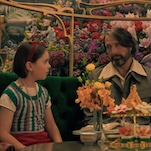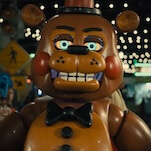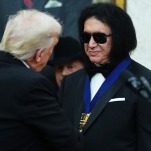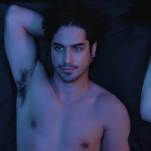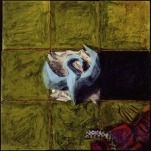Based on Selma Lagerlöf’s novel—and drawing, in turn, on the folklore that informed much of Swedish silent cinema—The Phantom Carriage tells the story of a bastard’s redemption without going soft on the “bastard” part. The legend behind the title is this: The last person to die before the clock strikes 12 on New Year’s Eve is condemned to drive Death’s chariot for a year, collecting the souls of the dead. The bell tolls for Sjöström, a raging alcoholic, after a fellow drunkard knocks him on the head for refusing to see Astrid Holm, the kind-hearted Salvation Army sister who’s made it her quixotic mission to help turn his miserable life around. Holm is on her deathbed, having contracted an illness from Sjöström’s filthy, germ-infected overcoat, which she hemmed on his first night under her care. And in addition to Sjöström being inadvertently responsible for her death, the Dickensian reaper shows him, via flashback, the harm he’s brought to his wife and children.
The Phantom Carriage is notable for its special effects, which turns the horse-drawn carriage and the souls of the dead into translucent figures superimposed against the material world. It’s a simple, beautiful in-camera effect, but it also serves to emphasize the body as a prison where mortals must contend with the consequences of their sins. Sjöström the director charges the story with high melodrama—perhaps a little too high in its hysterical treatment of alcohol consumption—but as an actor, he more subtly oscillates between cold-hearted rage and deep, intensifying shame. The Phantom Carriage is a stark moral tale, poised on the scary precipice between life and death.
Key features: A commentary by film historian Casper Tybjerg provides some fascinating context, like the film’s relationship to the global Tolerance movement. Also included are a pair of Bergman features that detail Sjöström’s influence, and footage of the massive studio space where the film was produced.



















